Fishes
Media
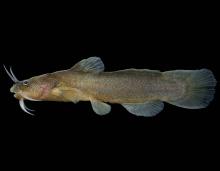
Species Types
Scientific Name
Noturus nocturnus
Description
The freckled madtom looks similar to the tadpole madtom and shares much of its range, but its upper jaw projects beyond the lower jaw, and the underside of the head and body are sprinkled with dark speckles.
Media

Species Types
Scientific Name
Noturus flavus
Description
The stonecat is the most common madtom in the large streams in the northern Ozarks and Prairie region. Its body and fins are nearly plain, its upper jaw projects beyond the lower jaw, and its lower lip and chin lack dark pigment.
Media
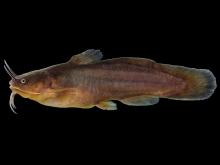
Species Types
Scientific Name
Noturus gyrinus
Description
The tadpole madtom occurs in the Bootheel lowlands and in a broad zone from southwest Missouri to northeast Missouri. This small, chubby catfish is most common in the Bootheel lowlands and in northeastern Missouri.
Media
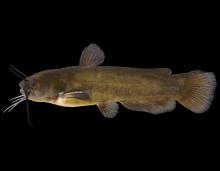
Species Types
Scientific Name
Ameiurus natalis
Description
The yellow bullhead is widespread in Missouri. It is the most common bullhead catfish in the Ozarks and Bootheel lowlands. It has white chin barbels, and the edge of its tail fin is straight, not notched.
Media

Species Types
Scientific Name
Noturus placidus
Description
The Neosho madtom is an endangered species in Missouri. It is our smallest catfish. It lives under rocks in riffles or runs in the clear waters of Spring River in Jasper County.
Media
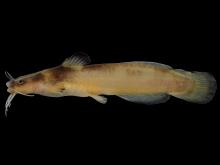
Species Types
Scientific Name
Noturus exilis
Description
The slender madtom is the most common madtom in the western and northern Missouri Ozarks, in small and medium-sized streams that have gravel bottoms, clear water, and permanent flow. It is scarce in the southern Ozarks.
Media
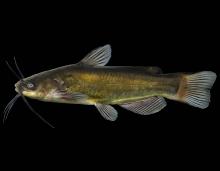
Species Types
Scientific Name
Ameiurus melas
Description
The black bullhead is widespread in Missouri. It is the most common bullhead catfish in north and west portions of the state. It has dusky or black chin barbels, and the edge of its tail fin is notched, not straight.
Media
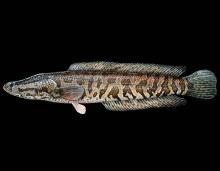
Species Types
Scientific Name
Channa argus and other Channa and Parachanna spp.
Description
Snakeheads are native to Asia and invasive in America. They resemble bowfins and can live in similar habitats. Note the extended anal fin and the pelvic fins located close to the pectoral fins and gills.
Media

Species Types
Scientific Name
Ictalurus punctatus
Description
The channel catfish is the official Missouri state fish. It is pale with dark spots and is found statewide in a variety of habitats, preferring large, rather turbid streams with low or moderate gradients.
See Also


Media

Species Types
Scientific Name
Amphiuma tridactylum
Description
The three-toed amphiuma is an eel-like, completely aquatic salamander. It has very small forelimbs and hind limbs, each with three tiny toes. In Missouri it’s found only in the Bootheel region.
Media

Species Types
Scientific Name
Siren intermedia nettingi
Description
The western lesser siren is an eel-like, aquatic salamander with external gills, small eyes, small forelimbs with four toes, and no hind limbs. In Missouri, it’s found mostly in the Bootheel and northward in counties near the Mississippi River.
About Fishes in Missouri
Missouri has more than 200 kinds of fish, more than are found in most neighboring states. Fishes live in water, breathe with gills, and have fins instead of legs. Most are covered with scales. Most fish in Missouri “look” like fish and could never be confused with anything else. True, lampreys and eels have snakelike bodies — but they also have fins and smooth, slimy skin, which snakes do not.





















